This year’s respiratory season is slowly fizzling out. But with that, new players have entered the scene. Here is your state of affairs.
Measles: Increasing
Measles continues to come in hot. A few things jumping out at me:
CDC reports we have had 45 cases across 17 states so far, which almost surpasses last year’s total of 58 cases across 20 states.
Cases are driven by lots of little sparks across the nation, opposed to one big outbreak like in 2019. The more embers, the more likely it is that they find unvaccinated pockets and spread like wildfire.
We don’t know much else, as the CDC website desperately needs a refresh. For example, the hospitalization rate, vaccination status, or age bracket of the cases is not publicly known. CDC does now include an epi graph, as shown below.
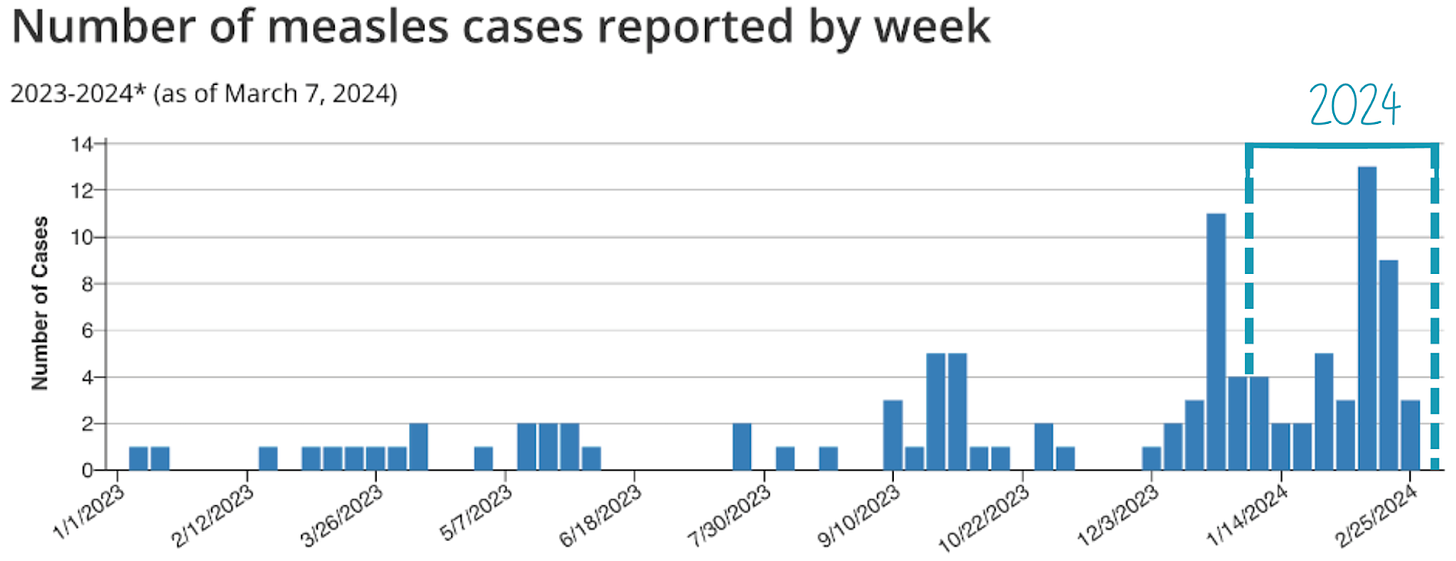
Some recent outbreaks making the news:
An outbreak which started at a Chicago migrant center includes several so far. Chicago Public Health Department has advised all families staying at the shelter keep their children in place. Unfortunately, this population has a lot of trauma, is very hesitant to vaccines, and distrusts institutions. CDC has sent a team to support the local response.
A measles case (child who just returned from international travel) arrived at a Sacramento Hospital last week, exposing about 300 people. No additional cases have been reported yet.
The Florida elementary school outbreak is holding strong at 9 kids. The outbreak is declared over once two incubation periods have passed (45 days), which is set to occur in the beginning of April.
The increase in measles is not exclusive to the U.S.. For example, the U.K. is having a very bad year, marking a 10-year high. Since February, 239 new cases were reported, with the majority (63%) of cases among children under 10 years old.
Same with Canada: In the first two months of 2024, there are 20 cases, with several community-acquired. There were 12 measles cases in total last year, which were all travel-related.
Why is this a problem? While the raw number of cases remain low (we aren’t seeing even close to pre-vaccine era numbers), each outbreak takes a ridiculous amount of resources. For example, a small outbreak in Tucson in 2011 cost close to $800,000. Moreover, the increase in measles is happening within a concerning context: vaccination rates declining due to a rapidly changing information landscape, decline in trust, and continued individualism. There are very few signs that this will be changing anytime soon.
Norovirus: Surging
Norovirus—a virus that causes stomach cramping, intense episodes of vomiting and diarrhea, and sometimes fevers—is taking off in the Northern Hemisphere. If we had a storm system for viruses, this might be deemed a shi… you get it.
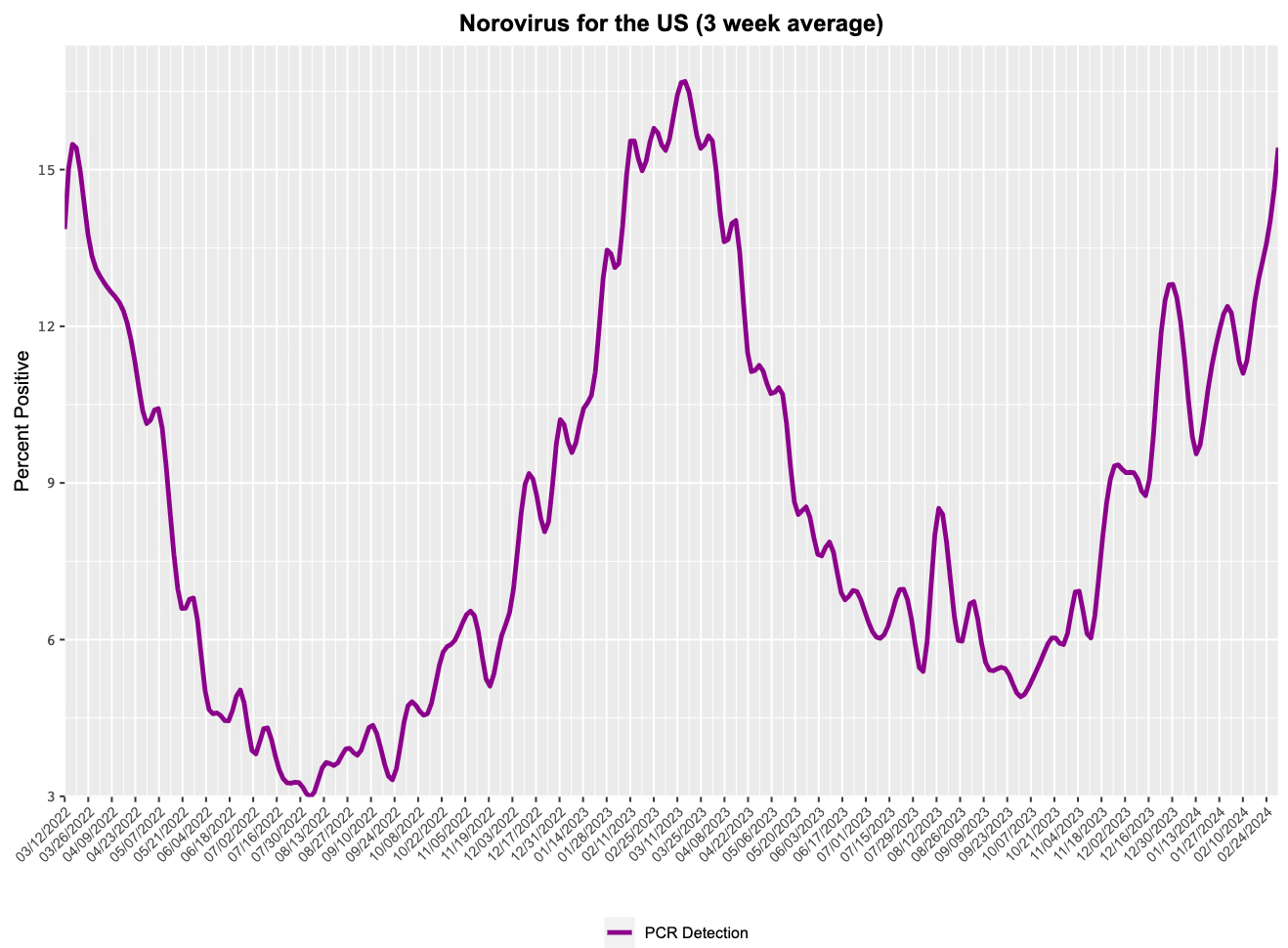
Ten percent of the population should expect to get sick. It’s very tough to protect yourself against this virus, but not impossible. Here are some pointers from a previous YLE post. For example, wash hands (rather than using hand sanitizer) and be sure to use bleach-based products on surfaces.
Influenza-like illnesses: Moderate and finally declining?
Within the last few weeks, the percentage of people going to the doctor for fever or cough has slightly declined after remaining stagnant for weeks. Unfortunately, it looks like respiratory seasons are back to “pre-pandemic” patterns, stretching out into March and April.
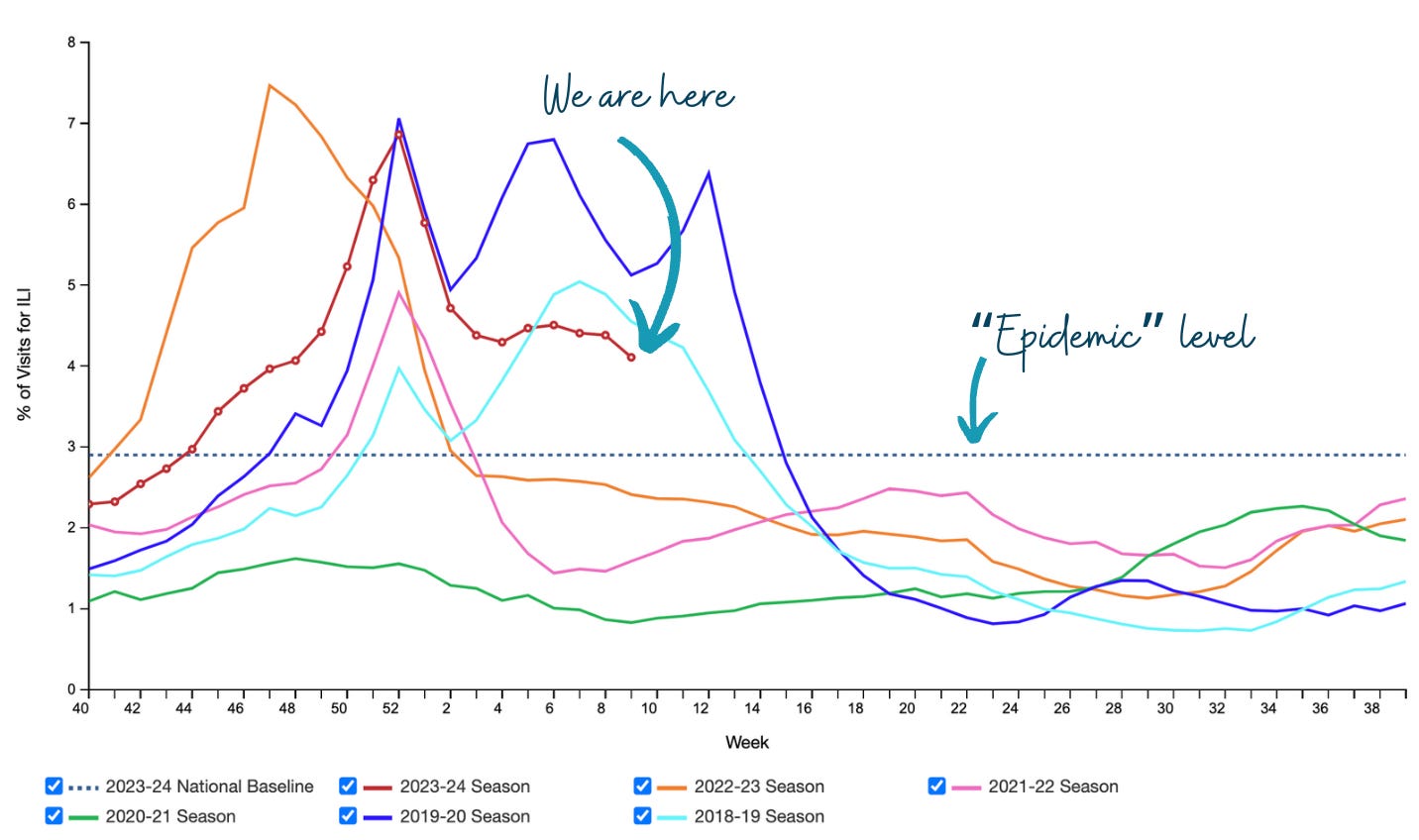
Flu: Moderate and staggering
The respiratory season stretching out is mostly due to flu strain B taking over (which is typical). Below is wastewater for flu, with B clearly surging, particularly in the Midwest and Northeast. (Notice the y-axis is different though, with Flu A still responsible for majority of cases.)
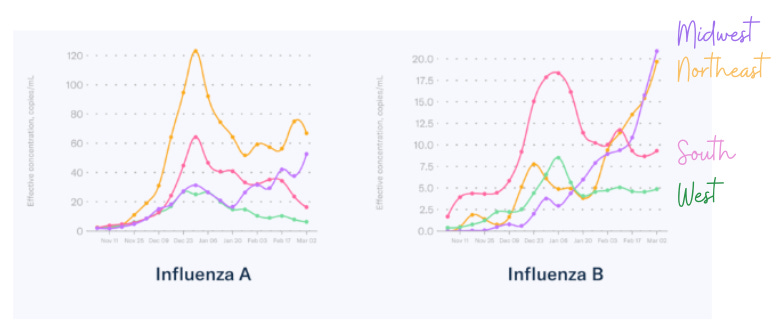
Regardless, we’ve had a pretty “normal” flu season, as hospitalizations this year are about in the middle of the pack compared to previous years.
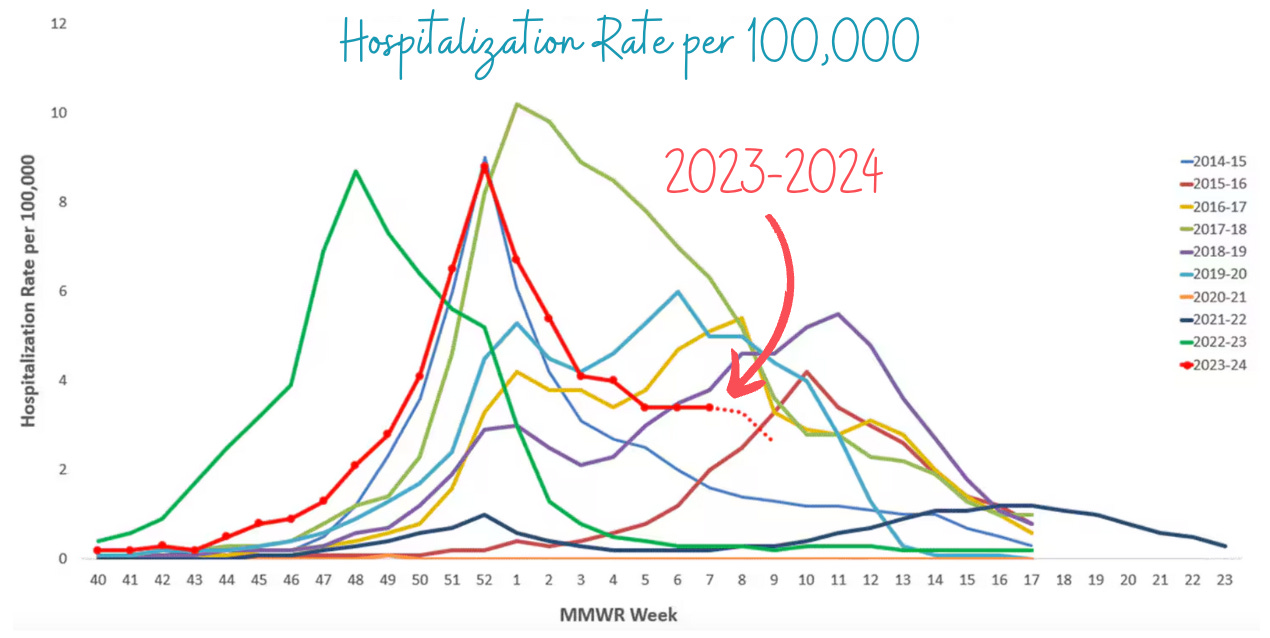
The most concerning thing about flu is how politicization from Covid-19 has spilled over to these vaccines. The latest Pew poll shows the gap between flu vaccine coverage is widening between political parties.
Covid-19: Moderate and declining
Covid-19 wastewater levels, for the first time this season, have reached “moderate” levels. While it remains highest in the South, levels there are falling too.

The biggest concern I have is the suboptimal uptake of Covid-19 vaccines. A new Pew survey showed a sharp decline for Republicans over the age of 65 years old—an extremely serious problem, and I have yet to hear that the U.S. has a solution for it.

The partisan gap on Covid-19 is narrowing as public interest in Covid-19 overall is waning. Most interesting, though, is bipartisian consensus for long Covid treatment. This is refreshing and should absolutely be translated into research dollars.

Bottom Line
Respiratory season is slowly waning, but measles and norovirus are ramping up. And an underlying tragedy is unfolding that is impossible to ignore: loss of trust spilling into all vaccine-preventable diseases.
Spring break is right around the corner, and there is still a considerable amount of respiratory disease out there right now. If you don’t want your travel plans interrupted, the best thing you can do is keep up with vaccines, wash those hands, and wear a mask, especially while traveling.
Love, YLE
In case you missed it:
“Your Local Epidemiologist (YLE)” is written by Dr. Katelyn Jetelina, M.P.H. Ph.D.—an epidemiologist, wife, and mom of two little girls. During the day, she is a senior scientific consultant to several organizations, including CDC. At night, she writes this newsletter. Her main goal is to “translate” the ever-evolving public health world so that people will be well-equipped to make evidence-based decisions. This newsletter is free, thanks to the generous support of fellow YLE community members. To support this effort, subscribe below:





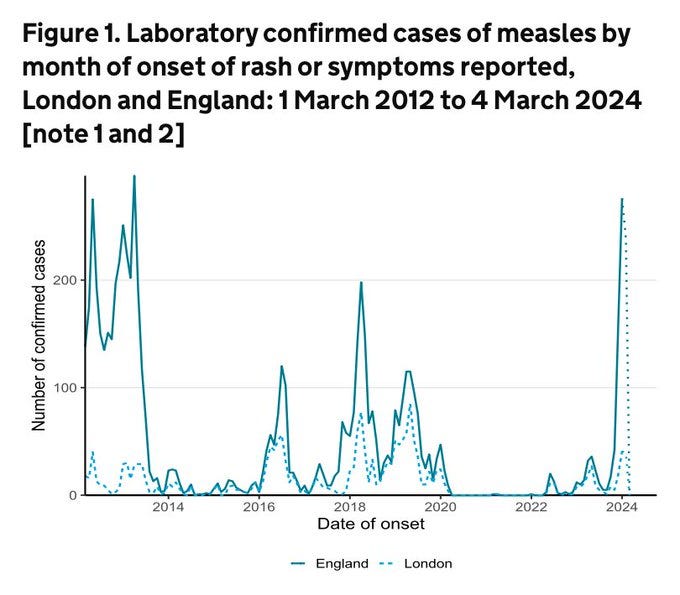

just a big thank you for all the information you give us that no one else is supplying
I rely on your reporting to access risk factors
No info is posted about COVID hospitalizations among children:
Children 5 -17 yrs: U.S.
↗️ COVID Hospitalizations
While other age groups are seeing a decline in hospitalizations, school-age children's hospitalization levels are back up to late December/early January levels.
Why is this happening?
Due to the transmission in classrooms and homes.
Although we don't see the exponential growth resume after winter break by looking at wastewater and hospitalization data that encompasses all ages, we do see it in the
air sampling & PCR testing studies, and this hospitalization data. After the initial decline from winter break, by mid-January, the hospitalizations started increasing again.
Together, they show us that COVID is spreading in schools and that it leads to preventable acute illness, #LongCOVID, and hospitalizations.